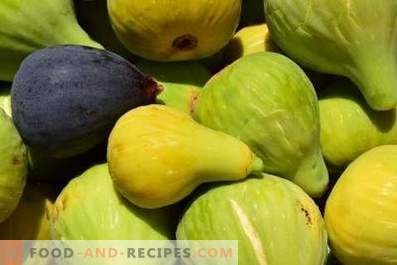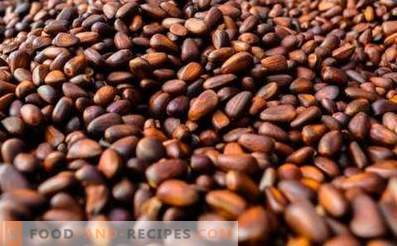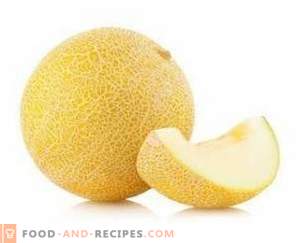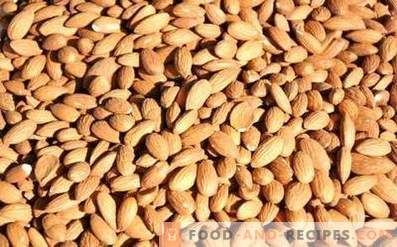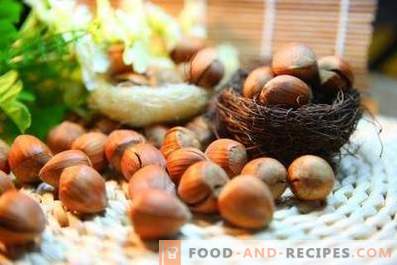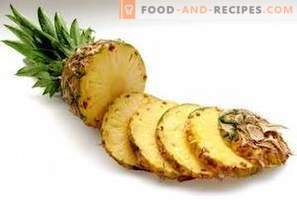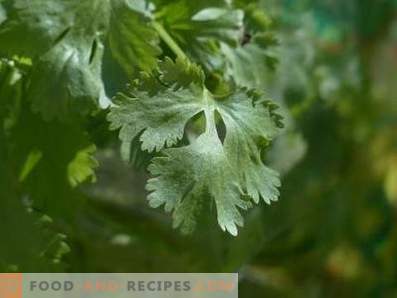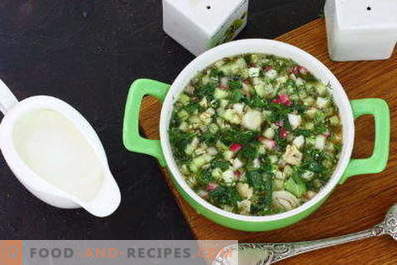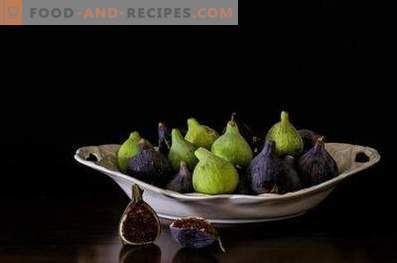
A fig (fig tree, Carian ficus, common fig tree) is a woody fruit plant belonging to the genus Ficus of the mulberry family. The homeland of this species is the mountainous regions of ancient Caria, one of the provincial regions of Asia Minor. Originally, figs were cultivated only in Arabia, Syria, Greece, Phenicia and Egypt, but later the number of countries growing it as an industrial crop increased to four dozen. To date, the largest producers of figs are Turkey, Portugal, Italy and African countries. This culture was widely spread in Georgia, mountainous regions of Armenia, in the south of the Crimea, in Azerbaijan, Abkhazia, the Carpathians and in the Krasnodar Territory.
Figs - a tree with a wide, spreading crown, reaching a height of 14 meters. The trunk of the plant is covered with smooth bark of a pale gray color. The rounded palmate-lobed leaves of Carian ficus have a rich green color on the top and a grayish-green color on the bottom. In the axils of leaf blades, short generative shoots develop with hollow spherical-oval inflorescences of two types: sycony (female) and capribi (male). Pollination of flowers located on the inner walls of the inflorescences is done by small insects, the wasp-blastophagous.
Over time, the pollinated inflorescences of the fig tree turn into pear-shaped fruits filled with sweet pulp and seeds. Their color can vary from pale yellow to blue-black. Figs are a valuable food product; Stems of this plant are eaten raw, dried, used to make canned food, fragrant jams and preserves. In addition, the fruit of the fig tree is actively used for medicinal purposes.
Nutritional value of fig fruits and vitamins in their composition
The stem of a fig tree is a real storehouse of useful substances. Its pulp contains B vitamins, beta-carotene, ascorbic acid, vitamins E, A and PP. In addition, figs contain sugars, indigestible dietary fiber, organic and fatty acids, vegetable protein and other compounds vital for humans.
Nutritional value of 100 g of fig:
- 0, 71 g of proteins;
- 11, 89 g of carbohydrates;
- 0, 24 g of fat;
- 2, 49 g of indigestible dietary fiber;
- 11, 19 g of mono- and disaccharides;
- 0, 49 g of organic acids;
- 0.11 g of saturated fatty acids;
- 82, 34 g of water;
- 0, 82 g of starch;
- 0, 13 g of unsaturated fatty acids;
- 1, 16 g of ash.
Vitamins in 100 g of fig:
- 0.053 mg beta-carotene;
- 0, 067 mg of thiamine (B1);
- 2, 124 mg of ascorbic acid;
- 0, 049 mg of riboflavin (B2);
- 8, 151 μg of vitamin A;
- 0, 112 mg of pyridoxine (B6);
- 0, 516 mg of vitamin PP;
- 0, 588 mg of niacin equivalent;
- 0, 162 mg of vitamin E;
- 9, 998 μg of folic acid;
- 0, 413 mg of pantothenic acid (B5).
Energy Value of Figs
- Calories 100 grams of fresh figs - 53, 8 kcal.
- Caloric value of one fruit (on average 45 g) - 24, 2 kcal.
- Calories of dried figs - 256, 8 kcal.
- Calorie figs, canned in sugar syrup - 68, 7 kcal.
- Calorie jams and fig jam - 237, 1 kcal.
Macro and trace elements in the composition of figs
Figs are a rich source of potassium. It is established that the content of this substance fruits of the fig tree are second only to nuts. In addition, calcium, phosphorus, iron, sodium and magnesium are present in the pulp of figs. Trace elements per 100 g of fig:
- 3, 198 mg of Fe (iron).
Macroelements per 100 g of fig:
- 16, 699 mg of Mg (magnesium);
- 189, 783 mg K (potassium);
- 17, 791 mg of Na (sodium);
- 34, 877 mg Ca (calcium);
- 13,664 mg of P (phosphorus).
Useful properties of figs
- Substances present in the fruit of the fig tree have anti-inflammatory, expectorant, diaphoretic, antiseptic and antipyretic properties. This allows the use of figs as an effective folk remedy for tonsillitis, pharyngitis, bronchitis, laryngitis and other inflammatory diseases of the respiratory system. A decoction of the stems of this plant is used to treat colds, accompanied by fever and cough.
- A decoction of the fruit of the fig tree is used to rinse the mouth during stomatitis and other dental diseases accompanied by inflammatory lesions of soft tissues.
- A few years ago, Japanese scientists established that sap-latex of figs has pronounced antitumor properties. Regular consumption of the fruits of this plant is a factor that reduces the risk of cancer.
- The enzyme ficin, which is present in the composition of figs, has a healing and therapeutic and prophylactic effect on the human cardiovascular system. This compound dilutes the blood, prevents the formation of blood clots and sclerotic plaques on the vascular walls, promotes the excretion of excess cholesterol from the body, strengthens the walls of capillaries, protects them from damage and gives them elasticity. Ficin is an effective remedy for arrhythmias and venous insufficiency, normalizes blood pressure, helps prevent the development of hypertension and ischemia of the heart.
- The substances contained in the fruits of the fig tree have a positive effect on the functioning of the blood-forming system. Therefore, experienced nutritionists recommend that people suffering from anemia regularly include dried or fresh figs in the diet, as well as jams, syrups and preserves made from it.
- In traditional medicine, well-ripened fig tree stems are used as a laxative and diuretic.
- Regular consumption of figs helps eliminate malfunctions of the digestive system. Several fruits of this plant, eaten before the main meal, stimulate the production of digestive enzymes and accelerate the process of assimilation of nutrients. The cellulose contained in the locust of Carian ficus helps excrete poisons, toxins and other harmful substances.
- The fruit of the fig tree is an indispensable component of the diet of a pregnant woman. Useful substances contained in the pulp of figs have a positive effect on the development of the fetus, prevent the appearance of congenital abnormalities in it. The inclusion of the fruit of the fig tree in the diet of a woman breastfeeding a baby contributes to a significant increase in the quality of mother's milk, enriching it with useful micro-, macroelements and vitamins.
- In traditional medicine, fig syrup is used to combat urolithiasis and kidney stones.
- The pulp of fresh figs is used in alternative medicine for the treatment of lichen and other dermatological fungal diseases.
- Calcium contained in the fruit trees of the fig tree strengthens bones, improves the appearance and general condition of hair and nails.
- Substances that are part of the fruit of the fig tree have a positive effect on the work of the nervous system, weaken the negative effects of stress on the body, help to avoid a sudden change of mood and depression.
- Regular consumption of figs helps to improve performance, get rid of chronic fatigue, physical and mental fatigue, improve concentration and memory.
- The inclusion of a fig tree in the diet of farm-trees allows normalizing the reproductive system in women. Substances present in their composition, weaken the unpleasant symptoms of PMS, help reduce the intensity of pathological secretions from the genital tract with thrush, contribute to the establishment of a regular menstrual cycle.
- In the east, figs have long been considered an effective tool to combat impotence and prostatitis in men.
- The fresh fruit of the fig tree contributes to the restoration of the body after exhaustion, suffering from severe, prolonged diseases. Substances present in figs strengthen the body’s immune defenses and its resistance to infection with viruses and bacterial flora.
Contraindications to eating figs as food
- Fig pulp (especially overripe) is rich in sugars. Abuse of the fruits of this plant can cause significant harm to people suffering from diabetes and obesity.
- Nutritionists recommend that individuals who have previously identified gout or inflammatory diseases of the digestive tract, abandon the use of figs during periods of exacerbations.
- Fruits of the fig tree have a laxative effect, therefore people suffering from diarrhea should temporarily exclude them from the diet.
